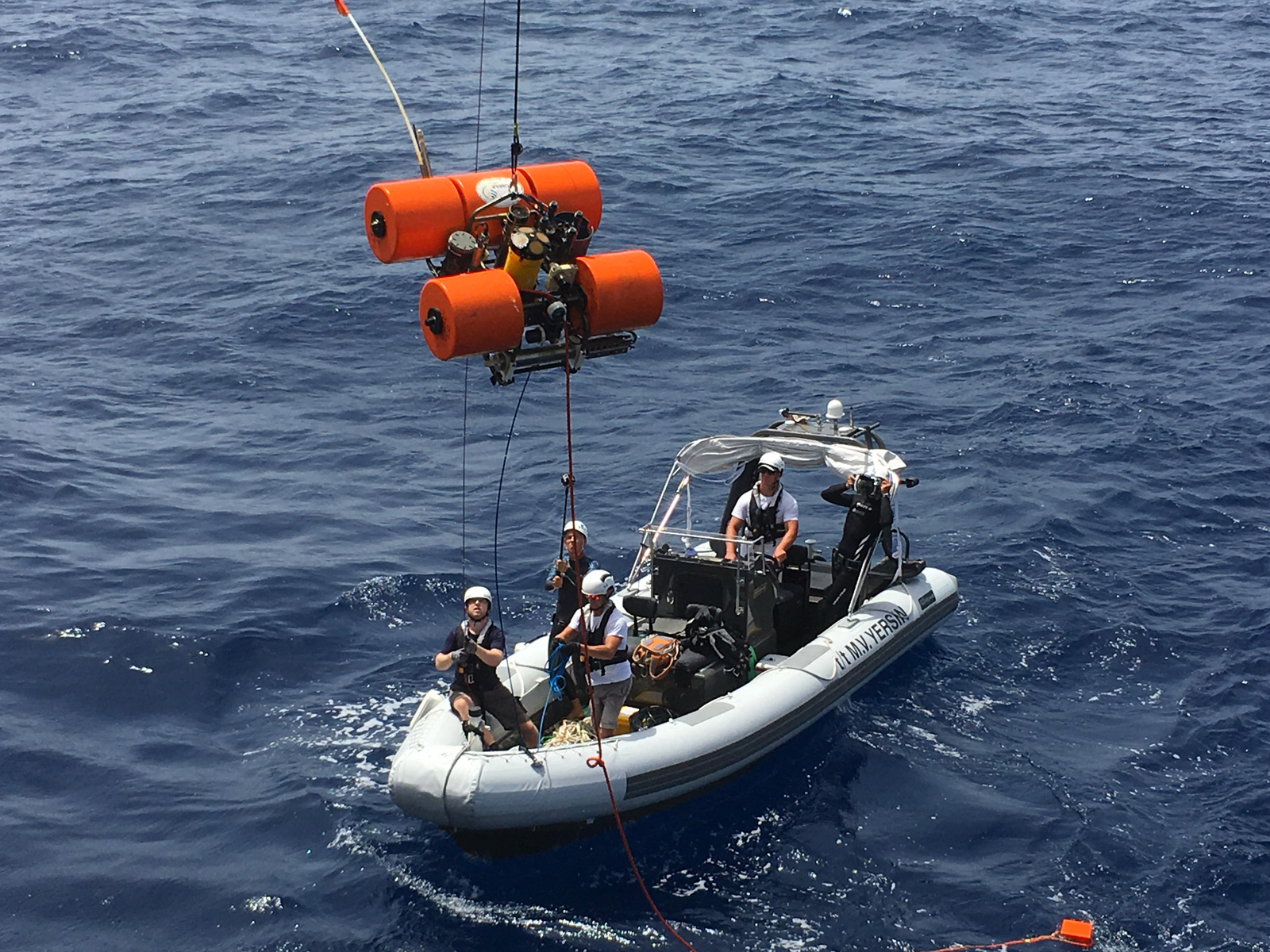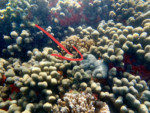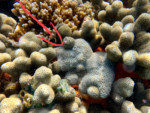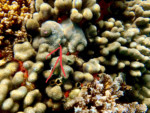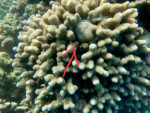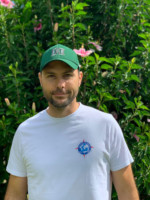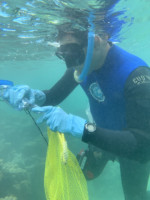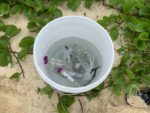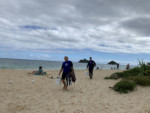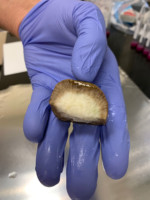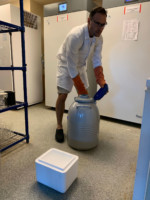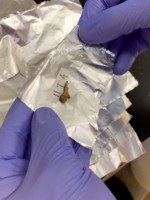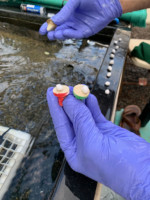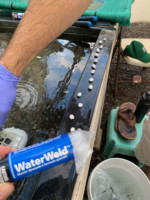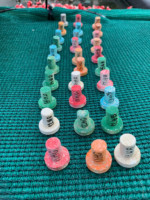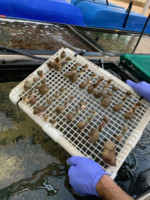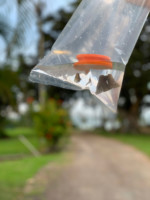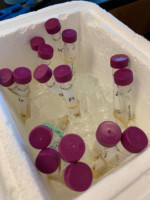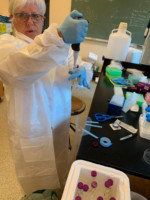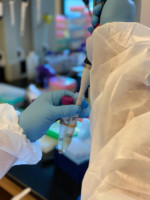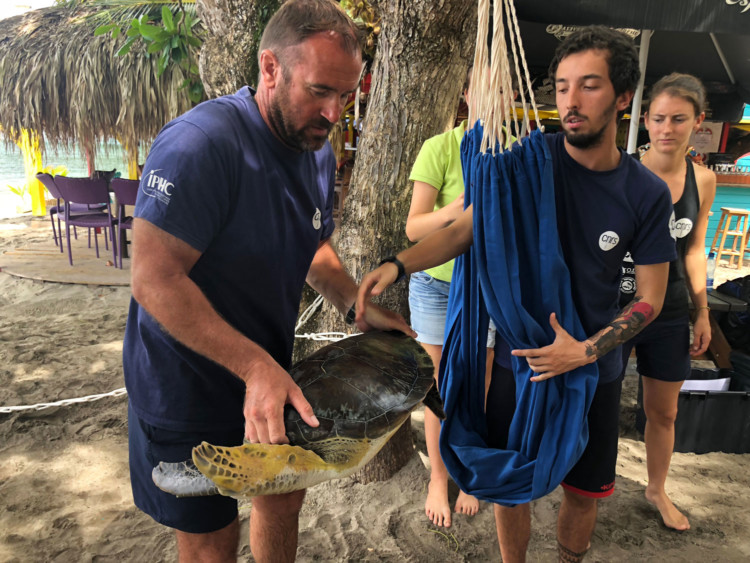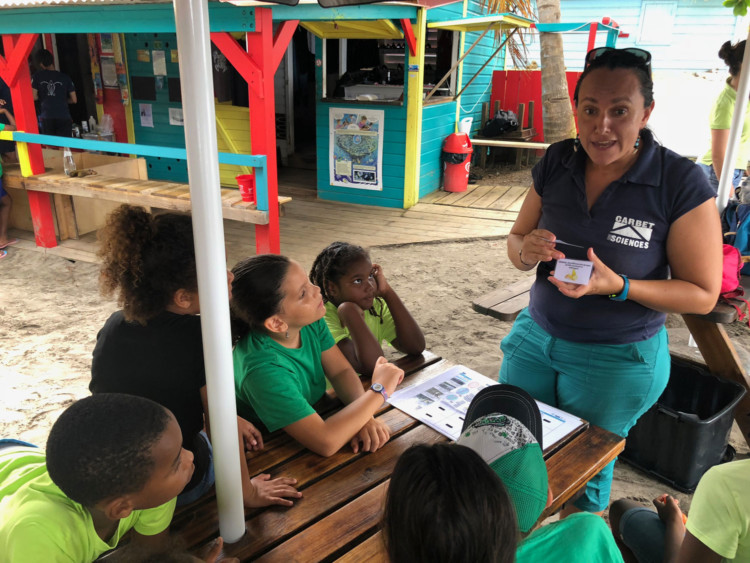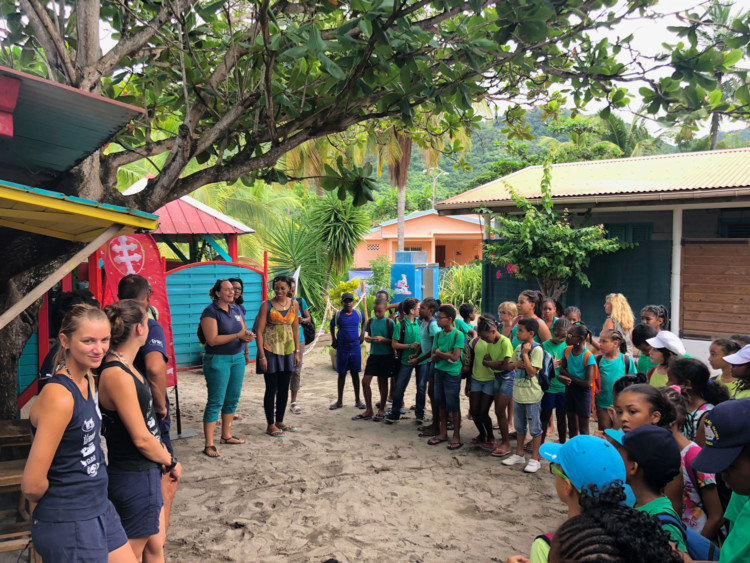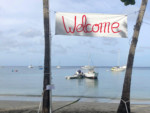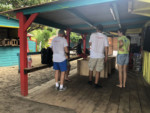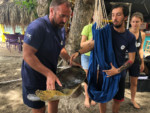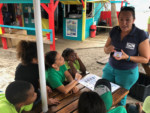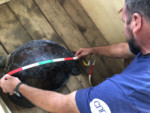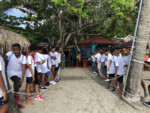These are photos taken today from our mission in Hawaii’s Kāneʻohe Bay on Moku O Loʻe Island. Each photo displays coral showing abnormal growths which may be caused by a virus, bacteria, or water temperature changes. The scientists on site from Centre Scientifique de Monaco have taken more than 100 samples from these diseased corals and will return them to their laboratory in Monaco to continue their research.
Dr. Francois Seneca is a Senior Scientist at Centre Scientifique de Monaco. He is a native of Monaco, and studied coral reefs around the world for almost 18 years before returning to work at CSM.
Seneca completed his Bachelors of Science at the University of Hawaii from 2001 – 2004. He wrote his senior thesis on abnormal growths on corals, advised by Dr. John Stimson, who was his coral reef ecology professor. His senior project, on which the thesis was based, was conducted here at HIMB.
After his undergraduate studies, Seneca returned to Monaco for an internship at CSM before attending James Cook University in Australia for his PhD in biochemistry and molecular biology. Following that, he held a post-doc position at Stanford University’s Hopkins Marine Station in Monterey Bay, California, USA where his work focused on the effects of climate change on corals. Next, he took a post-doc positions at UH’s Kewalo Marine Lab and finally at the Smithsonian Marine Station at Fort Pierce in Florida, USA.
Now, as a Senior Scientist at CSM he is working on the development of the Aiptasia sea anemone as a model for host-pathogen interactions from corals to humans.
If you are interested in Francois’ work you can fseneca@centrescientifique.mc
After collecting samples of diseased corals from the sea, Drs. Dorota Czerucka and Francois Seneca must preserve the samples in various forms to ship the samples to their lab and perform their research.
We are hosted by the Hawaiʻi Institute of Marine Biology and able to use their laboratories here on Moku O Loʻe Island to preserve the samples.

First, we use underwater paper to mark each sample, 1-10 healthy, and 1-10 with tumors.

Next, prepare the liquid nitrogen. This is one way the samples are preserved. Dropping them in the -196 degree liquid nitrogen preserves the sample exactly as it was found, so that DNA, RNA and proteins can be extracted and analyzed based on the environment in which the sample is living. The sample is cut into smaller pieces as we will preserve it multiple ways – the nitrogen is one, but we also keep some alive in sea water to transport them back to our lab in Monaco and let them continue to grow.
Next we move on to the wet lab where there is sea water pumped into tables so the samples can continue to live. First step here is to prepare these stems marked with the sample number and either H for healthy or T for tumor. The stems are placed into a tray, as shown in the photo, with the diseased coral on the left and the healthy on the right. Each sample is cut into 3 so there are more chances of a live coral being preserved, and because each will be used for a different research purpose. When we are ready to leave Hawaii, the samples are suspended on a string and floated in a bag filled with seawater and 100% oxygen, which is what they will consume to survive on their trip to Monaco.
While collecting pieces of coral, we also scrape the mucus from their surface to collect and analyze bacterial communities. Here you can see that it’s much like the coral – there is one sample of mucus taken from healthy coral and one taken from the diseased coral on the same colony. The samples are mixed with the Vortex machine which ensures the bacteria is completely mixed with the sea water, then put into centrifuge to separate the bacteria completely before preserving it in the liquid nitrogen and preparing it for shipping back to Monaco. In the photos it is easy to see the difference between the healthy mucus (clear) and the diseased mucus (brown).
To collect samples for research, the scientists must spend time in the sea searching for coral colonies that show abnormal growths. Each day, we suit up and collect our materials and head out to sea with snorkels and masks hoping to collect samples from a total of ten colonies. When one is identified, a photo is taken to document the size and GPS coordinates. Next, Francois Seneca chips away 2 pieces from the colony – one of the healthy coral and one of the diseased coral. He then stores the samples in separate bags pre labeled 1-10 for both healthy and diseased samples. Next, he repeats the process with a new colony.
Here’s a video that shows what that process looks like.
Our mission here in Hawaii is in collaboration with Drs. Dorota Czerucka and Francois Seneca from Centre Scientifique de Monaco (CSM). This team is working on a project on the development of the Aiptasia sea anemone as a model for host pathogen interactions from corals to humans. Part of this process is to collect samples from coral colonies here in Hawaii that are showing abnormal growths and attempt to understand why the growths are occurring and how the corals are reacting to and fighting the growths. In doing so, because of similarities in innate immunity in humans, it is also possible to apply this research to human health and immunity.
Collecting the samples is fairly simple, albeit tedious, work and the biggest challenge in this part of the research process is ensuring the samples are preserved correctly for a safe and healthy return to the laboratory in Monaco. The photo below shows an example of a coral with an abnormal growth (the top part).

Monaco Explorations is on mission in Les Anses d’Arlet, Martinique from October 2nd – October 12th, 2018. Together with CNRS and Ifremer, we are working to capture turtles and collect data and samples. The information obtained helps with developing and implementing more effective threat mitigation measures. While we are working on the scientific project, Carbet des Sciences and our partners at Institut Océanographique are hosting local student groups participating in Martinique’s ‘Marine Educational Area Program’ to provide education and experience relating to turtle conservation.
The scientific project is conducted in partnership with local institutions and is part of the National Action Plan (NAP) for the Protection of Marine Turtles in Martinique (coordinated by the Office National des Forêts (ONF) and Direction de l’environnement de l’Amenagement et du Logement (DEAL) Martinique).
The objectives of the project are:
- To study the trophic ecology of the three marine turtle species (Green Turtle, Hawksbill, and Leatherback)
- Follow their population dynamics (capture-marking-recapture) on areas of development and laying
- Monitor the growth of immature individuals
- Assess the age/ aging rate of individuals in relation to the quality of the habitat
- Determine the energy expenditure allocated to each activity in relation to the characteristics of the habitat
- Identify the species consumed and their energetic quality
- Study the role of Green Turtles in the expansion, stabilization, or disappearance of Halophila stipulacea (invasive phanerogam) in Martinique and the French West Indies
- Study the impact of contaminants on the physiology of sea turtles
- Study the genetic diversity of immatures of each species on developmental areas
- Learn migration strategies according to oceanographic conditions

We are on mission in Les Anses d’Arlet, Martinique from October 2nd – October 13th, 2018. Together with CNRS and Ifremer, we are working to capture turtles and collect data and samples. The information obtained helps with developing and implementing more effective threat mitigation measures. While we are working on the scientific project, Carbet des Sciences and our partners at Institut Océanographique are hosting local student groups participating in Martinique’s ‘Marine Educational Area Program’ to provide education and experience relating to turtle conservation.
The scientific project is conducted in partnership with local institutions and is part of the National Action Plan (NAP) for the Protection of Marine Turtles in Martinique (coordinated by the Office National des Forêts (ONF) and Direction de l’environnement de l’Amenagement et du Logement (DEAL) Martinique).
The objectives of the project are:
- To study the trophic ecology of the three marine turtle species (Green Turtle, Hawksbill, and Leatherback)
- Follow their population dynamics (capture-marking-recapture) on areas of development and laying
- Monitor the growth of immature individuals
- Assess the age/ aging rate of individuals in relation to the quality of the habitat
- Determine the energy expenditure allocated to each activity in relation to the characteristics of the habitat
- Identify the species consumed and their energetic quality
- Study the role of Green Turtles in the expansion, stabilization, or disappearance of Halophila stipulacea (invasive phanerogam) in Martinique and the French West Indies
- Study the impact of contaminants on the physiology of sea turtles
- Study the genetic diversity of immatures of each species on developmental areas
- Learn migration strategies according to oceanographic conditions
It is believed that the exceptional longevity of coral is a hindrance to its ability to adapt to climate change. Is it doomed ? A study published in Sciences Advances by Centre Scientifique de Monaco holds out some hope … you can read that in French and English in La Gazette de Monaco.
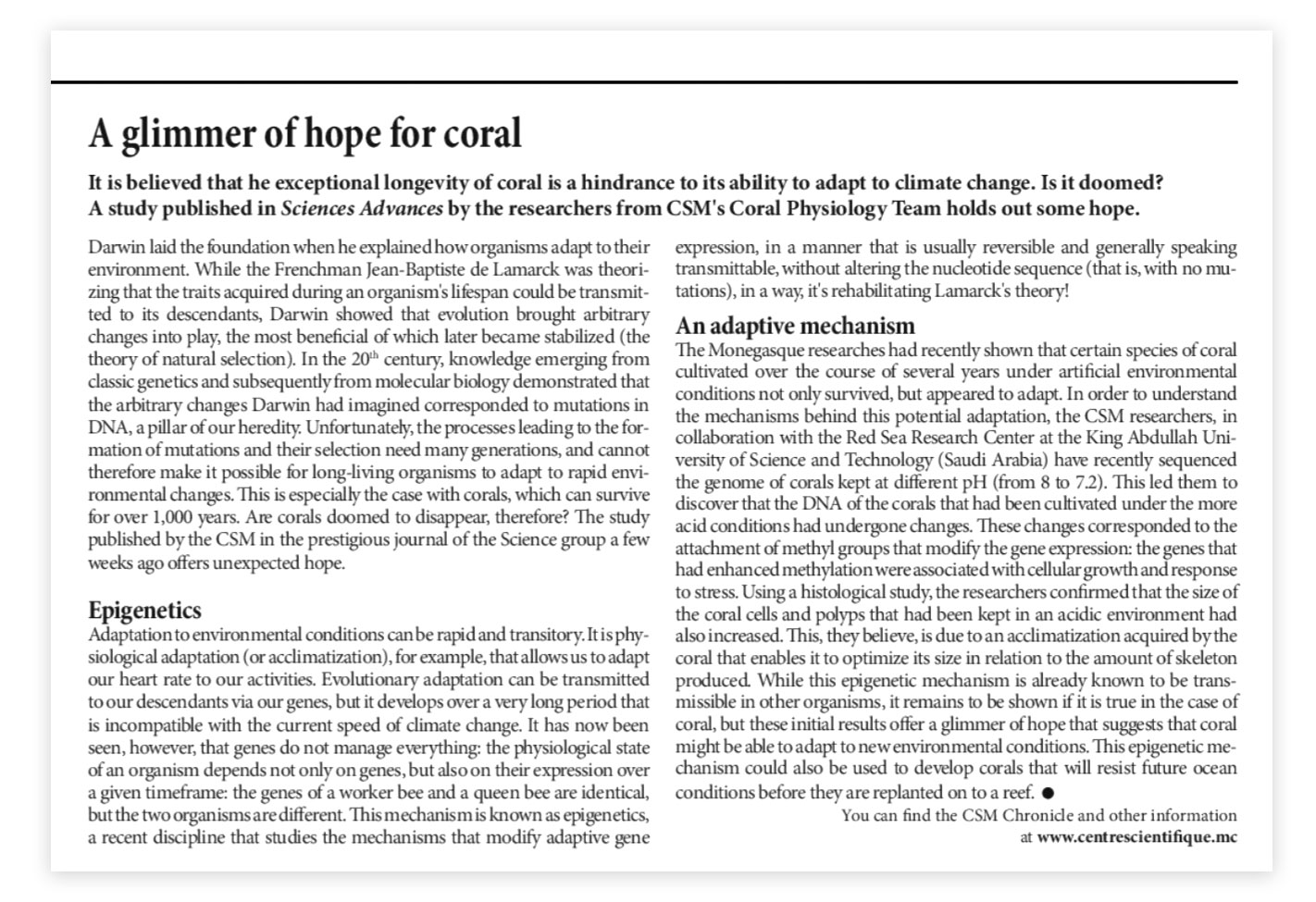
The decrees adopted Tuesday create within the Coral Sea Natural Park an integral reserve of 7,000 km2 and a nature reserve of 21,000 km2, which cover more than a third of the exceptional New Caledonian reefs. With 1.3 million square kilometers, the Coral Sea Park, created in 2014, is one of the largest marine reserves in the world. It is home to an exceptional diversity with more than 2,000 species of fish, 310 species of coral. Any human activity other than scientific is prohibited on some portions of reefs known to accommodate green turtles, sharks or humpback whales. In the nature reserve area, fishing will be prohibited, including for self-consumption, as well as motorized water sports, bivouacs or picnics on land.
Access will be subject to charges and regulated tourism: prior authorization from the government for tourism operators, ban on boats with more than 200 passengers, presence on board of staff trained in good park practices …
During our mission with Geomar in the Norwegian seas we have used a specific tool.
JAGO is its name.
it’s a manned submersible dedicated to exploration and research in marine sciences. It allows researchers to go to a depth of 400 meters.
Its weight is 3 tons and its size is 3 x 3 x 2.5 m
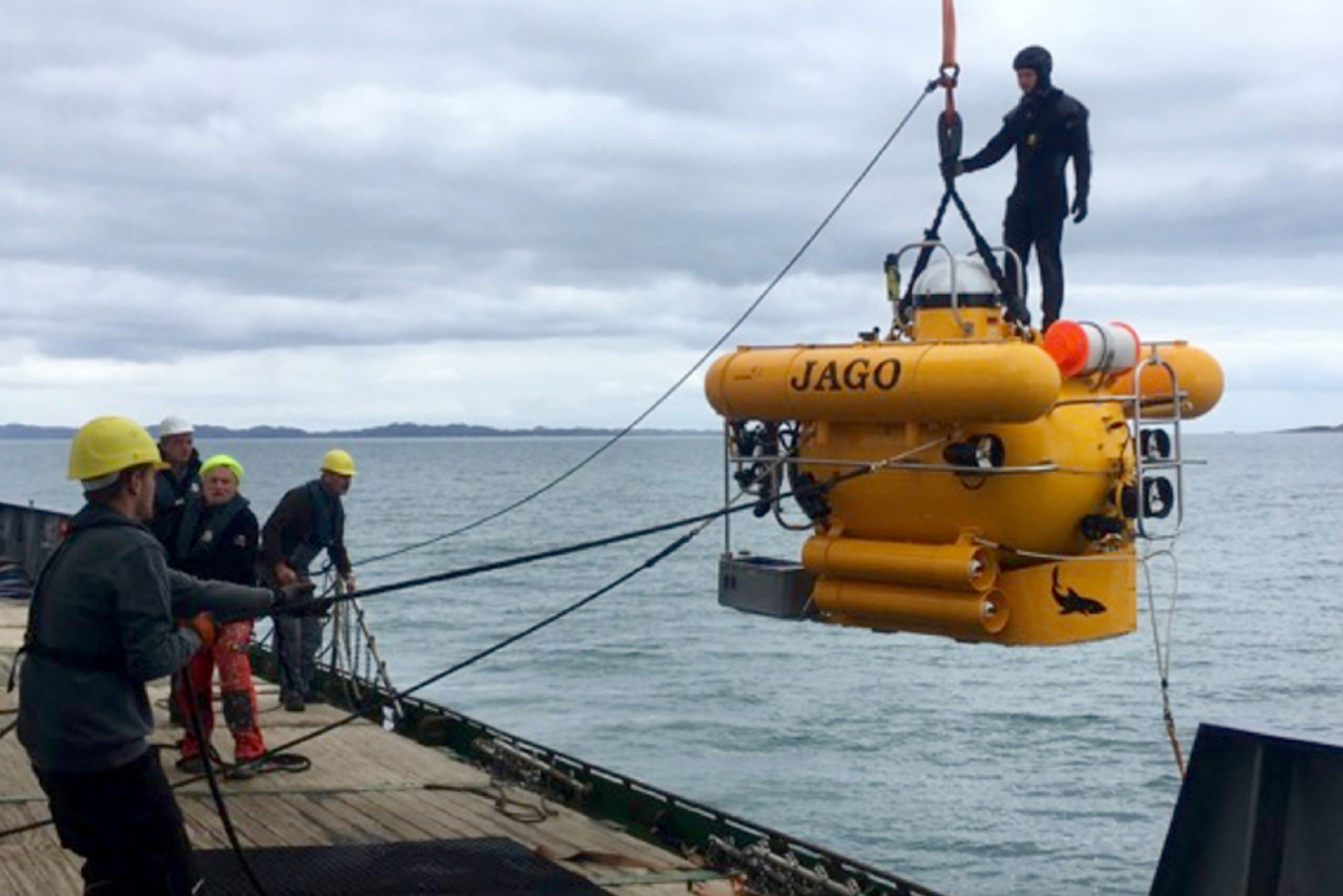
Piloted by and operator, the submersible moves underwater without being connected by an umbrilical cable to a support ship.
Its robotic arm is very efficient to collect specific organisms, solid, gas or water samples and its digital cameras can give photo or video views from the seafloor.
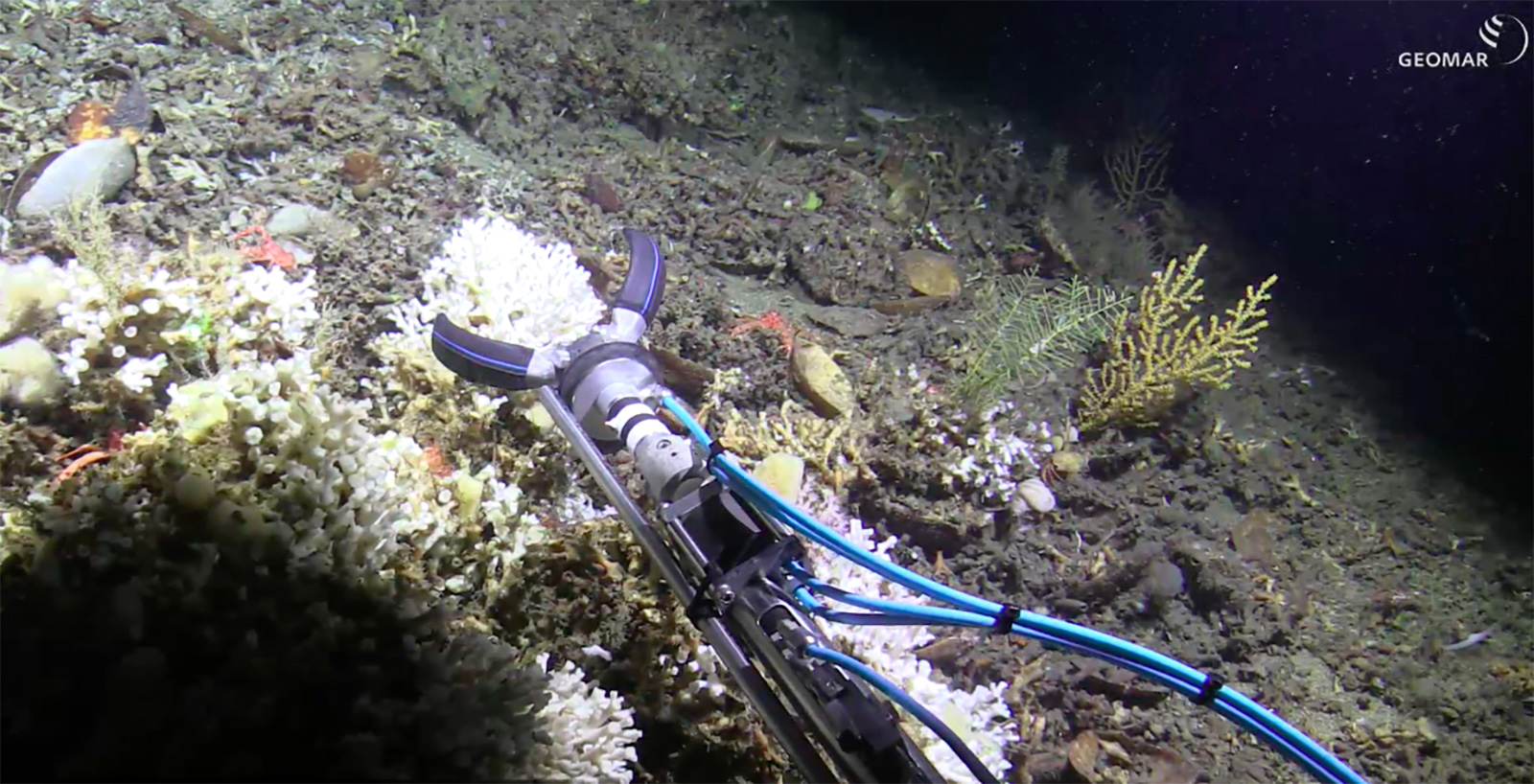
JAGO is presently the only manned research submersible in Germany.
It belongs to Geomar and is a new example of the deep and strong collaboration between Monaco Explorations and the German institute.
This common work started in Cabo-Verde In September 2017 to retrieve and put back on seafloor a bottom lander and launch a wave glider.
